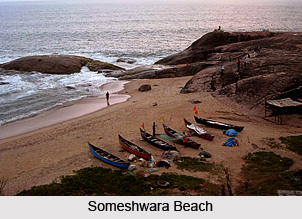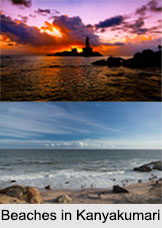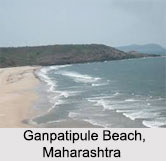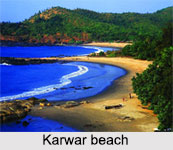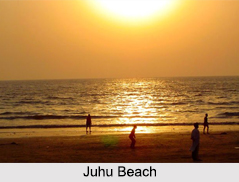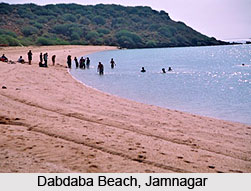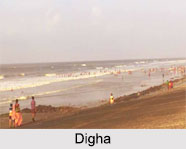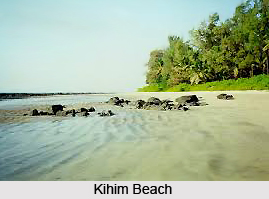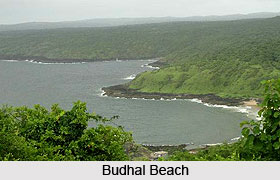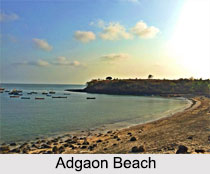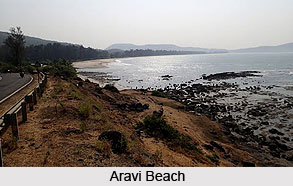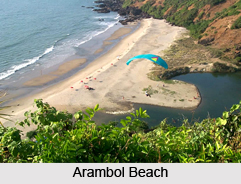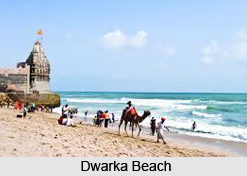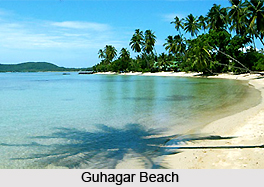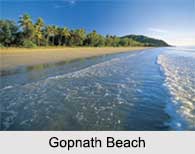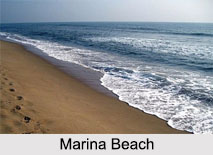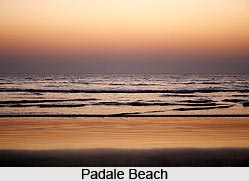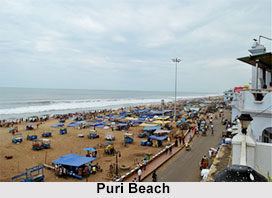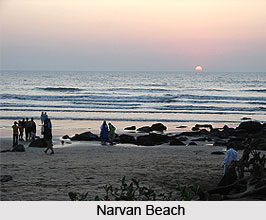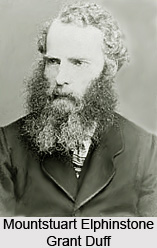 History of Marina beach, situated in Chennai city of the Indian state Tamil Nadu along the Bay of Bengal, dates back to 16th century when there were frequent floods near the coast owing to the rising sea level. After the withdrawal of the sea water a number of lagoons and ridges emerged. One of the sand ridges continuing from the mouth of the Cooum to the present site of the Presidency College lied on the southern part of the Fort St. George. A huge depression was located at the rare side of the ridge over which the college grounds has been developed. This ridge forms the site of the present day Marina beach.
History of Marina beach, situated in Chennai city of the Indian state Tamil Nadu along the Bay of Bengal, dates back to 16th century when there were frequent floods near the coast owing to the rising sea level. After the withdrawal of the sea water a number of lagoons and ridges emerged. One of the sand ridges continuing from the mouth of the Cooum to the present site of the Presidency College lied on the southern part of the Fort St. George. A huge depression was located at the rare side of the ridge over which the college grounds has been developed. This ridge forms the site of the present day Marina beach.
In the year 1640, Fort St. George was constructed during which the sea was very near to the fort. Near the fort, a harbour was built which resulted in the accumulation of sand towards the south of the harbour and the fort. The sea washed the ramparts of the fort and gradually created a wide beach between the land and the sea. Prior to the construction of Madras harbour, the beach comprised just a strip of mud along with mudskippers. Till the building of the harbour in 1881, the beach was washed up for a long time till the present day road. Mountstuart Elphinstone Grant Duff who served as the governor from 1881 to 1886 was enthralled by the beach during one of his earlier visits to the city in 1870s and decided to build a promenade along the beach. The construction was done in the year 1884 by extensive layering and thus modifying the soft land.
Numerous public buildings began to be erected in front of the beach since early 19th century. Post harbour construction the region towards the south of the port began developing prominently and gradually formed the present day beach. Its accretion occurred mainly owing to the presence of wave breakers which were laid for building the harbour. However the northern coast has suffered severe erosion. The beach widened to its present extent eventually due to the north drifting current. The accumulation of littoral drift by the port`s breakwater is also responsible for the formation of the beach. It has been observed that every year the beach area increases 40 square metres due to progradation.
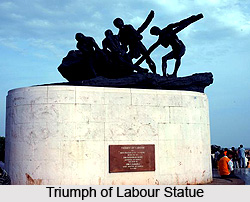 After the promenade was built in the year 1884, many additions were made along the beach. In 1909 India`s first aquarium was established. Post independence the beach hosted the Gandhi statue in `march to Dandi` stride and the Triumph of Labour statue, both of which were sculpted by Debi Roy Chowdhury who was the first Indian Principal of the Madras School of Arts and Crafts at the age of 30. Later in 1968, several other statues and icons associated with Tamil literature were erected including Bharathidasan, Subramania Bharathi, Kambar, Tiruvalluvar, Avvaiyar, G.U. Pope, Fr. Beschi and Europeans Bishop Caldwell. The event marked the first World Tamil Conference. Anna Samadhi (memorial) and the MGR Samadhi were built in 1970 and 1988 which reduced the stretch of beach at the northern end. Later the statues of Kamaraj and Shivaji Ganesan were also added.
After the promenade was built in the year 1884, many additions were made along the beach. In 1909 India`s first aquarium was established. Post independence the beach hosted the Gandhi statue in `march to Dandi` stride and the Triumph of Labour statue, both of which were sculpted by Debi Roy Chowdhury who was the first Indian Principal of the Madras School of Arts and Crafts at the age of 30. Later in 1968, several other statues and icons associated with Tamil literature were erected including Bharathidasan, Subramania Bharathi, Kambar, Tiruvalluvar, Avvaiyar, G.U. Pope, Fr. Beschi and Europeans Bishop Caldwell. The event marked the first World Tamil Conference. Anna Samadhi (memorial) and the MGR Samadhi were built in 1970 and 1988 which reduced the stretch of beach at the northern end. Later the statues of Kamaraj and Shivaji Ganesan were also added.
